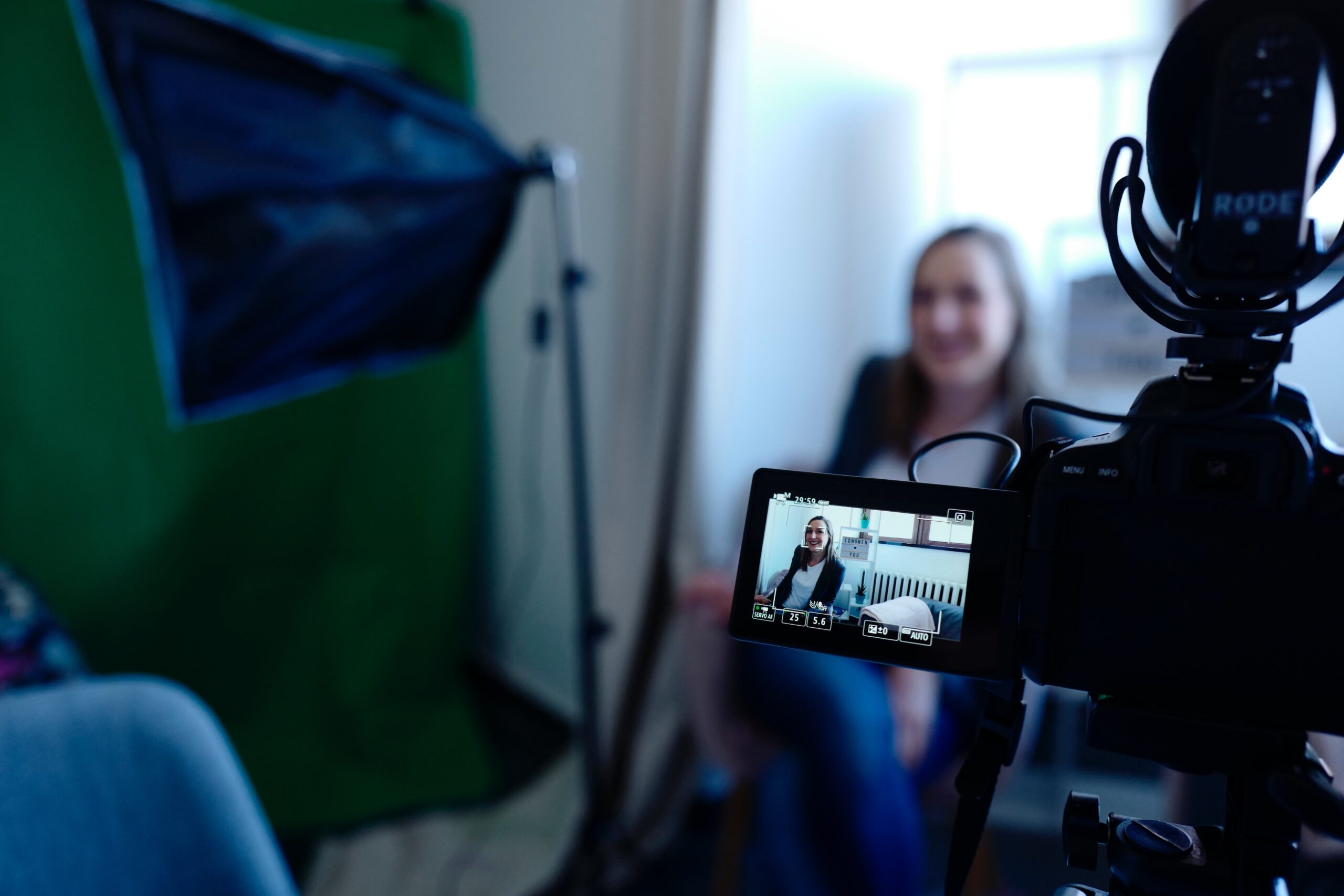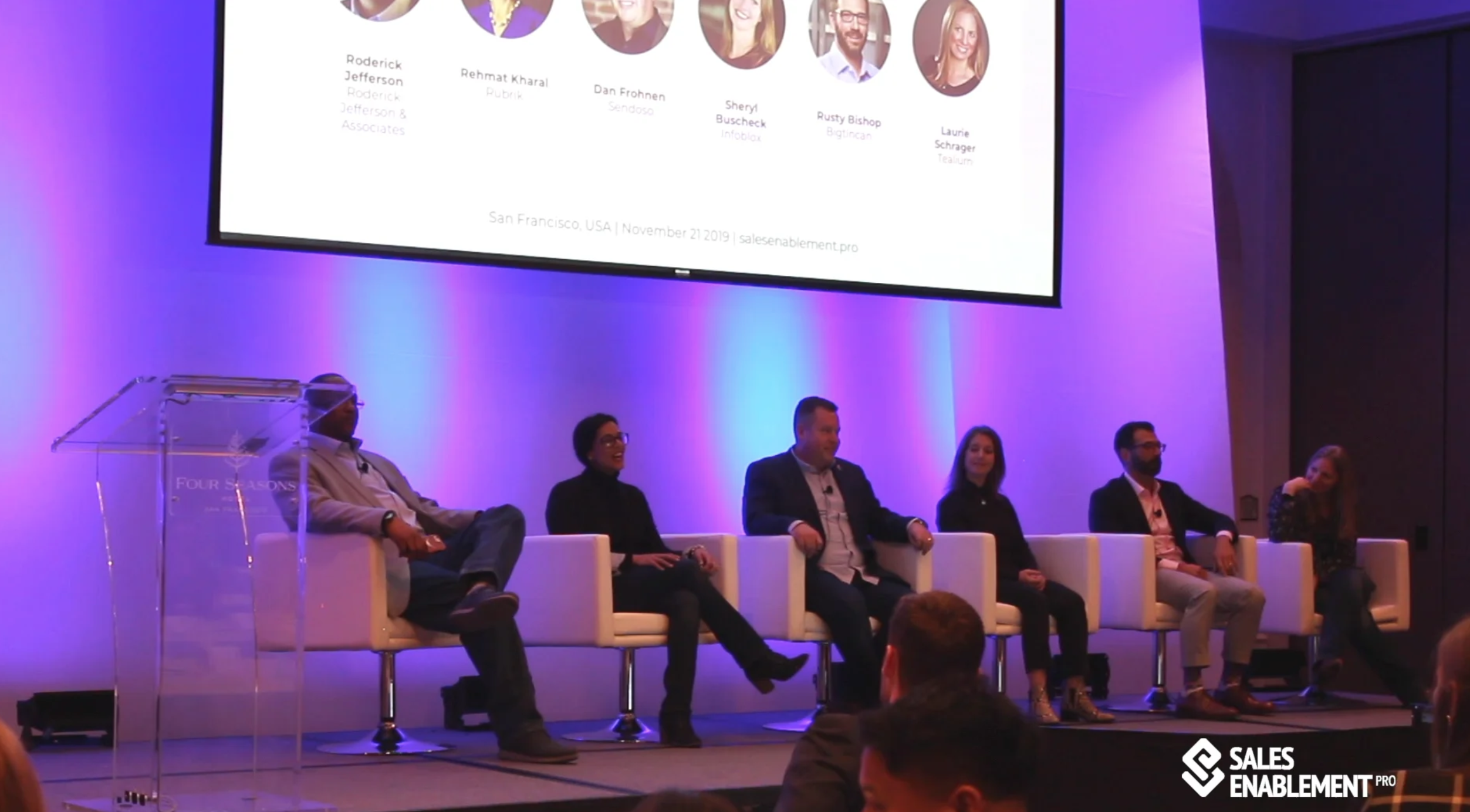Shawnna Sumaoang: Hi, and welcome to the Sales Enablement PRO podcast. I am Shawnna Sumaoang. Sales enablement is a constantly evolving space, and we are here to help professionals stay up to date on the latest trends and best practices so they can be more effective in their jobs.
Today we’re excited to welcome Joe Booth to the podcast. Joe, could you take a minute and just introduce yourself?
Joe Booth: Yeah. My name is Joe Booth. I am currently the senior director of sales enablement and competitive intelligence for a company called SecureAuth and we’re in the cybersecurity space, specifically around identity access management.
SS: I’m so glad that you were able to join us today, Joe. I would love to understand what sales enablement looks like within your organization. The competitive intelligence portion of your title is relatively unique.
JB: Sure. I think the reason that competitive intelligence really lines up nicely with sales enablement is it all comes down to why we win and lose. I think a lot of times there is this misconception around sales enablement which is that we’re just facilitators for subject matter experts to come in and we build training for them and then we distribute it and we sort of sit casually by and hope that people do the training. But really at the end of the day, sales enablement is all about helping sales reps close deals. I mean, that is where the rubber meets the road.
So, if you’re not able to put together a program that’s producing results, then there’s no reason for your program to be in place. And competitive intelligence takes a close look at why we win and lose against the competition and then we take those reasons of why we win and lose, and then we build programs around that, and then we pull in the specific subject matter experts when necessary.
But we really have to do a lot of digging and research on our own to understand who we are winning and losing against, why we are winning and losing, and then take the reasons why we lose and for what we can do to help qualify deals more effectively, we want to be able to do that. And then for the reasons we win, we want to say how do we scale this and make sure that all the reps are able to take these best practices. So competitive enablement and sales enablement really do go hand in hand with helping reps be successful in the field.
SS: I love what you just said about doing the analysis to understand why we win and then how to scale that across the rest of your sales reps. Are you able to talk to me about maybe an example of an initiative where you were able to do this successfully across your reps?
JB: Yeah, sure. Sales enablement really encompasses the people, processes, and systems within an organization. So, you have to think about who are the people that we need to work with as subject matter experts and then who is our target audience? And our target audience is our sales reps, and those come in different forms. They could be your business development reps, your sales engineers, your channel account managers, your account managers. Every organization has different titles, but really when I think of sales reps, they are people that are selling either a meeting to a customer or an end product to a customer.
So, our internal clients as a sales enablement team are our sales reps, so we work with subject matter experts to build content for our end user, which is the reps, right? But we can’t just take information that we think the sales reps are going to be able to find helpful. We really have to understand what challenges they’re facing in the field, again, why they’re winning and losing against certain competitors, and then be able to take that information back in this loop.
Essentially, it’s this feedback system that you have in place, and that encompasses not only the people you work with but the systems that you have in place such as your CRM. So, most sales reps do not like putting information into the CRM. I know that for the many years I was an enterprise sales rep selling software, I did not like having to keep all the data in the CRM up to date. I didn’t understand the value that it added to me as an individual, and I certainly didn’t have any visibility into the downstream processes that the CRM had in place.
Well, now that I’m over here on the dark side of operations, I understand how much we leverage data in the CRM and the importance of having clean data to pull from. So, when we think about a very specific initiative around why we win and lose, how we pull the information out of the CRM, and then taking it to subject matter experts to help us put together better programs that we then put back to the sales rep, we see how these things all start to work together.
So, let me give you a specific example: In the CRM, we are very much interested in capturing who our primary competitor is when we’re winning and losing against a deal. We also want to know why we won or lost. We have things like primary win-loss reasons, supporting win-loss reasons, and these can just be dropdowns in your fields in the CRM. There are different ways to capture this. And then you have a freeform text field where you are able to put specific notes.
Whenever we see a deal come in either won or lost, then what I’m looking at is who is that primary competitor, then what are the reasons that we won or lost, and then I look at that free-field text to see what sort of quick sentences or blurbs did the sales rep then add for additional detail. And if it’s vague or if it’s confusing, I will just reach out to that rep directly and it’s a five-minute phone call or it can be just a really quick email to get some very specific nuggets that we can then use to consolidate all the information over the course of a month or over the course of a quarter, and then we say here’s why we are winning or losing, here’s who we are winning or losing against, now let’s take this back to marketing or the product team or sales operations to figure out which knobs we need to twist in order to overcome these obstacles or scale this up.
We’ve taken the information from the sales rep that they’ve put into the CRM, we take that back to the subject matter expert internally, and then we produce programs as a sales enablement team to get the sales reps even more enhanced on being able to compete more effectively. So that’s kind of just one of the examples of ways that we use people and systems and processes in one.
SS: That’s amazing, and yes, I applaud you for being able to get your reps to put that information in the CRM. You mentioned a couple of things, a) that you come from a sales background, and b) the importance of sales reps understanding the value of the information they are providing. Can you give some advice to other sales enablement professionals that might be struggling? How do they articulate the value in the right way to their reps so that they can get that level of information from them?
JB: Let me take it on in two chunks. The first one is getting people to buy into the reasons that they’re going to be successful. I mean at the end of the day; people are inherently selfish. We all come to work for very specific reasons that we have that might not be shared with our colleagues. There is this conception around salespeople that we’re all coin-operated and that might be true for some people. Yes, the money can be very good, but there are a lot of other jobs you can get in corporate America that are paying you well over six figures, so not everybody that is in sales is operated by cash.
A lot of people love the customer service aspect of it. They love helping people. They like solving problems. And then there are other sales reps that really just like getting in the weeds and understanding business processes and then helping customers be able to overcome those challenges that they are facing internally. So, there are a lot of different reasons why people get into sales in general.
In order to get them to be bought into sales enablement, you have to figure out what’s driving this individual and then help show them the value that your team is going to be able to provide to them. Now maybe it’s a training program that’s going to take them two hours to complete. You’ve got to make it in a deliverable content that works for them so they’re not just overwhelmed sitting in front of a boring video for two hours. Break it down into bite-sized chunks, use gamification, make it relevant to them, use different aspects of media. If you make it entertaining and compelling, people are going to be more likely to complete the activity and then also to participate in your next one. So that’s on you to figure that out. Who’s your target audience, how do you really reach them?
But when it comes to helping salespeople understand good data in the CRM, or maybe just sales enablement in general, this comes down to helping people understand what it is like to operate a business. Because a lot of the times, sales reps, in particular, are very focused on the thing that they need to do, which is to close new deals or up-sell, cross-sell existing customers. So they’re really focused on this one aspect of their little business but they might not be, if they haven’t held operational roles or cross-functional roles in the past, they may not be as savvy when it comes to understanding how important one thing is for one department that is going to relate to all the other aspects of how a business is operated.
Now the cool thing about sales ops, which is the department within my organization that sales enablement falls under is it’s this cross-section of sales, finance, legal, product marketing and then, of course, I’m part of that subset of sales enablement and competitive intelligence. So, we see on a day to day basis how important it is for information to flow from one department to the next, but a sales rep might not necessarily have that visibility. Being able to show them how one thing that they’re doing is going to impact the downstream processes, and it’s not just about impacting downstream processes, it’s about impacting the people that they work with. Helping other peoples’ jobs be easier or be more streamlined if they’re putting in the appropriate information instead of having people always follow up.
So, if you show people the big picture, I think that they are more likely to act in the way that you want them to act, which is all about transparency within an organization and that comes down to communication. And really sales enablement is all about a communications role. Figuring out what motivates your individual, building training programs that fit their learning style and are compelling, and then giving them visibility into the broader organization I think is really going to help somebody do the things that they need to do within the CRM, or if it’s just processes that they need to follow that might be outside of a system.
SS: Excellent. I want to touch on two things that you said. I want to talk a little bit about learning style because I feel like you sound well versed in this and I want to understand kind of your thinking around how do sales enablement professionals come into an organization and really get to know their sales reps’ learning styles and then deliver against those?
JB: You know, learning styles can be hard to figure out and it’s never just one thing. We always have a blend. I will use a personal story. After college, I got into snowboarding instruction, I was in the snow sports industry, the snow sports education industry, for about ten years. We have a strong emphasis on understanding your students’ learning styles and then teaching to them.
A very specific example of that is what we call EDPF, so this is “explain, demonstrate, practice, and feedback”. So, you explain something to somebody, and the people that are a little bit more on the auditory learning style are going to be able to pick that up. Then when you demonstrate something to somebody, the visual learners are going to be able to pick that up. And then when you allow them to practice it, the kinesthetic learners are going to be able to use that. Now, they all need feedback, and that feedback should also be delivered in that learning style.
You’re not just giving somebody one type of information depending on the learning style that you think they might have; you’re understanding that we are all a blend of different learning styles and depending on the content that we’re receiving, one presentation might be more appropriate than another. For example, we’ve all experienced workshops where you’re hands-on, whiteboarding in front of your peer group and you walk away and you feel like you’ve learned a lot. And then there are other times when it’s more appropriate to actually just sit down and listen to a subject matter expert sort of preach to you for a little bit so you can soak in that information.
Once you identify the fact that you have to tailor your teaching style to the learning styles of people and you have to mix those up, then you can start getting creative with your training programs. For example, our new hire training is a mix of classroom style where we have subject matter experts coming in, we have quiet time for workbooks when an individual is allowed to sort of take a break from the group and just focus on themselves and their own thoughts for a little bit.
Then we have group whiteboarding exercises where they’re up, they’re moving, their blood is pumping, they’re talking, they’re using their bodies on the whiteboard, so you’re really trying to hit all the different learning styles for all those different individuals. And then as you are working with the group and you start talking to the individuals and seeing how they present information and the type of questions that they ask, then you are able to start picking those things up. And it’s not super hard to do. It just takes a little bit of practice and definitely paying attention, and every student’s going to be different and every teacher is going to be different as well.
SS: Thanks for listening. For more insights, tips and expertise from sales enablement leaders, visit salesenablement.pro. If there is something you would like to share or a topic you want to know more about, let us know. We would love to hear from you.







